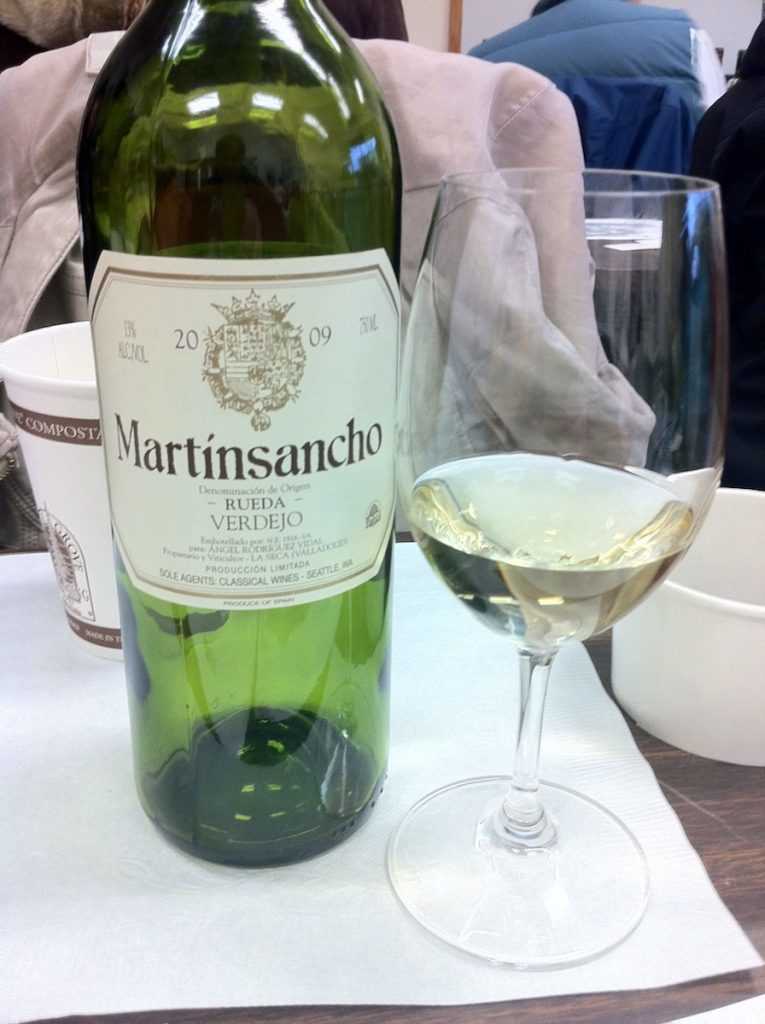ECLECTIC EPICURE
Most people in Mexico associate Spain with red wines, and rightly so.
The Iberian nation has some of the world’s finest and most distinguished tintos on the market, and a full 80 percent of Spanish wines sold in Mexico are reds.
Moreover, Spain’s full-bodied and robustly structured Rioja and Ribera del Duero vintages make them ideal for accompanying Mexican cuisine.
In fact, roughly 28 percent of all wines consumed in Mexico in terms of volume and 30 percent in terms of value are from Spain, according to Spanish Ambassador to Mexico Luis Fernández-Cid de las Alas Pumariño, and the vast majority of those originate in Rioja and Ribera del Duero.
But while the tempranillo and garnacha grapes may be king in traditional Spanish cellars, the country also has a significant and growing white wine selection.
And the Rueda Denominación de Origin (D.O.) label, spanning the provinces of Valladolid, Segovia and Ávila in the Castile and León region in central Spain, is the last word when it comes to Spanish whites.

The wines of Rueda tend to be fresh and fruity, with plenty of untempered tannins.
Most Rueda wines are made from the region’s star grape, verdejo, which, according to some accounts, was brought to Spain from northern Africa in the 11th century and provides a soft, aromatic bouquet and full-bodied flavor.
The region has been producing wine for more than a millennium, and even in the early Renaissance period, Rueda blancos were among the favorites of King Ferdinand and Queen Isabel.
For the most part, these wines were made from heat-tolerant palomino grapes and transformed into fortified wannabe-sherries that could never quite compete with their inspirations from Jerez.
Verdejo grapes were used mostly for cheaper table wines and blending, often shipped to other regions as bulk wines.
But all that changed in the early 1970s, when the historic Rioja label Marqués de Riscal began exploring the production of high-quality verdejos processed without wood and using 20th century technology.
The result were fresh, minerally wines (thanks to Rueda’s gravelly terrain), full of crisp tannins with hints of green apples, wild herbs and bitter almonds.
In the last four decades, Rueda has come into its own as a modern contender in the global marketplace, with most vintners dumping their oak barrels in favor of stainless steel tanks and combining modern equipment and winemaking technology with a refinement of traditional verdejo grape-growing.
Last month, the Regulatory Council for the Rueda Denominación de Origin — in cooperation with the Spanish Embassy here and that country’s premier wine guide, Guía Peñín — presented a sampling of the region’s finest vinos to Mexican connoisseurs and buyers during a daylong wine festival at the Hacienda de los Morales restaurant in Polanco.
The festival — the fourth of its kind sponsored in Mexico — included more than 150 labels from 31 estates from across Spain, plus 14 Mexican vineyards and a Rueda tasting seminar led by Guía Peñín technical director Carlos González Saéz.
All the wines presented in the tasting were 100 percent verdejo, and all but one of the vintaged wines were from 2016.

There was also a sparkling Añ Nature Bodega Mocén with a subtle greenish-yellow hue that held its own with tiny, enduring bubbles and a strident acidity that was served at the start of the tasting.
The next four wines included a 2016 Bodega Verdeal Variedades, a 2016 Blanco Nieva Pie Franco a 2016 Avelino Vegas Circe Verdejo, a 2016 Blanco Nieva Pie Franco from Valladolid, and an acerbic and minerally 2016 Javier Sanz Viticultor V Malcorta from Segovia.
Although there were nuances in each of these labels, they were all consistently full of fruity bouquets and tart tannins.
Also, they all bore Rueda’s trademark pale yellow color and transparent brilliance, and several of them included a surprisingly lactic undertone.
The sixth wine was a wood-aged 2015 Protos Bodegas Verdejo with a rich amber color and a pleasant suggestion of vanilla and nutmeg thanks to a brief passage in oak.
This wine was much more complex and interesting than the previous verdejos and was topped with a delightfully sour buttermilk aroma.
The Protos had a strong pineapple and mango taste intertwined with hints of fennel and artichokes.
The tasting closed with a Hijos de Alberto Gutiérrez Alberto Dorado fortified verdejo from Valladolid that was bottled as a wine but was prepared and tasted like a Solera Jerez.
This wine opened disappointingly dull in the mouth but then suddenly burst into a rush of toasted almonds and hazelnuts that could easily have passed for an Andalusian manzanilla pasada.
Its sunny golden-hued color virtually screamed sherry, and with a 17 percent alcohol content, it was equally potent, suggesting that Rueda’s now-bygone age of producing mediocre fortified wines may soon be overshadowed with the region’s comeback as a major quality vino generoso producer.
THE NEWS










